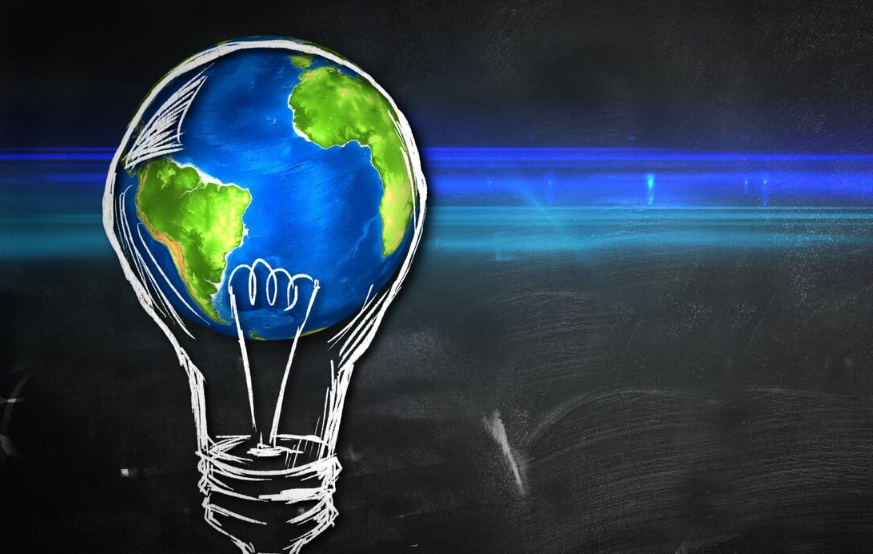In today’s hyper-connected world, most of us leave a substantial digital footprint—social media profiles, online purchases, emails, blogs, photos, and more. With so much of our personal information stored online, it raises an intriguing question: what happens to our digital selves once we’re gone? As we transition into an era where nearly every aspect of our lives is recorded, the concept of “digital ghosts” has emerged. These digital remnants represent the afterlife of our online personas, raising both ethical and philosophical questions about identity, memory, and the future of online existence.
The Birth of the Digital Self
Before we can understand the concept of digital ghosts, it’s essential to examine the digital self itself. Our digital presence is an extension of who we are in the physical world. It includes:
- Social Media Accounts: Facebook, Instagram, LinkedIn, Twitter, etc., all host a collection of our thoughts, relationships, and moments.
- Emails and Messaging: Communication in the form of emails, texts, and even chat logs that store our conversations and interactions.
- Photos and Videos: Visual representations of our lives that capture everything from everyday moments to special events.
- Digital Purchases and Preferences: Online shopping histories, music playlists, search histories, and more create a digital record of our tastes, preferences, and habits.
The sum of all these elements creates an intricate web of data that forms a “digital self,” which is, in many ways, an accurate reflection of our physical existence. But unlike the real world, our digital selves don’t cease to exist once we do. Instead, they linger in the form of digital footprints, often unmonitored and untouched.
What Happens to Your Digital Self After You Die?
When a person passes away, their online profiles and data remain active unless intentionally deleted or deactivated. This creates the phenomenon of “digital ghosts”—the lingering presence of someone who has passed, trapped in the virtual world. But how do these digital remnants affect the living, and what implications do they have for our digital legacy?
1. Social Media Accounts: Living on in the Digital World
Social media platforms are perhaps the most visible and interactive form of a digital afterlife. Facebook, for example, offers a “memorialized” account option, where the deceased’s profile remains online as a memorial page. Friends and family can still leave messages or share memories, making the profile a space for grieving and remembrance.
However, the existence of these accounts also raises questions:
- Who owns the account? Can family members or friends access the deceased’s profiles to manage or close them?
- What happens to the content? Are our posts, photos, and interactions permanently archived or deleted?
In many cases, social media platforms have policies in place to deactivate accounts after death, but the debate continues about whether this should be automatic or left to the deceased’s loved ones to decide. The idea of “living on” through social media profiles forces us to reconsider our relationship with the concept of digital immortality.
2. The Ethics of Digital Memorialization
The growing trend of digital memorials has led to discussions about the ethical implications of keeping someone’s online presence active after their passing. Some people believe that memorializing a deceased person online can serve as a way to honor their legacy, while others argue that it may distort the grieving process, prolonging emotional pain for those left behind.
There are also concerns about the authenticity of a digital presence once a person is gone. Who controls the content shared posthumously? What if an algorithm begins posting content that doesn’t align with the deceased’s true character or beliefs? In this regard, the digital ghost becomes something more than just a memory—it can take on a life of its own, potentially becoming a distorted version of the individual.
3. The Evolution of “Digital Afterlife” Services
As society has become more aware of the lasting nature of our digital footprints, some companies have emerged to help individuals manage their digital afterlife. These services range from digital will creation to posthumous social media management. Some examples include:
- Digital Estate Management: Platforms that allow users to specify how their digital assets (social media accounts, email accounts, digital photos, etc.) should be handled upon death.
- AI-Powered Chatbots: Some services create AI-driven digital avatars that can “converse” with loved ones after death. These bots analyze years of digital interactions to simulate the deceased’s communication style, offering an eerie form of continued engagement.
- Memorial Websites: These websites allow families to create virtual memorials, complete with digital tributes, photos, and even guest books for mourners to sign.
These services attempt to give individuals more control over their digital legacies, allowing them to curate how they will be remembered online and giving families a way to manage digital assets after their passing.
The Psychology Behind Digital Ghosts
The concept of digital ghosts taps into a psychological need for connection, even after death. The internet provides a sense of immortality, enabling us to keep a person’s memory alive through digital spaces. But this virtual persistence also raises questions about grief and memory.
- Grief and Closure: For many, having a loved one’s digital profile remain active can offer comfort, allowing them to keep interacting with that person’s memory. But for others, seeing an online presence after death can prevent true closure, making it harder to let go.
- The Impact on Future Generations: As digital records become more sophisticated, future generations may have access to detailed records of their ancestors’ lives, far beyond what would be available in physical archives. This could alter how we understand legacy and heritage, providing a more personalized and multifaceted picture of our predecessors.
The Future of Digital Ghosts: Immortality or Invasion?
As technology evolves, the concept of digital immortality becomes increasingly possible. Advanced AI systems and neural interfaces could potentially allow us to upload our consciousness, creating digital copies of ourselves that could continue to “live” long after our biological bodies are gone.
While this sounds like something straight out of science fiction, some tech giants, such as Google and Facebook, have already begun investing in AI-driven posthumous technologies. For example, AI-based avatars may one day be able to carry on conversations or respond to queries in a manner similar to the deceased person. These digital replicas would be an extension of the person’s identity, a digital “ghost” that could interact with the living, providing a form of immortality.
However, this raises significant ethical questions:
- Who decides what is acceptable? Should we have the right to simulate or control how we are represented digitally after death?
- What are the risks of creating digital replicas? Can they perpetuate an idealized or false version of ourselves, or even become manipulated by others for personal gain?
The notion of uploading one’s mind into a digital realm offers the promise of immortality, but it also brings up deep existential concerns about the nature of identity and the human experience.
Conclusion: The Digital Afterlife is Here
The rise of digital ghosts represents a shift in how we perceive memory, identity, and legacy in the digital age. While it’s comforting to think that our online personas might continue to exist after we’ve passed, it also challenges us to reflect on the ethics and impact of digital immortality. How we manage our digital selves and what happens to them after we die will likely become a significant part of the conversation about technology and life after death in the years to come.
As we move forward, the question remains: What do we want our digital ghosts to say about us, and how do we want to be remembered in the digital world? The answers may not be simple, but they will shape the way we approach both life and death in an increasingly connected world.


